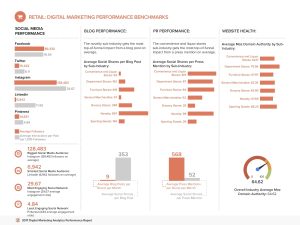
In today’s digital age, influencer marketing has become a powerful tool for businesses to reach their target audiences and increase brand awareness. Instead of solely relying on traditional advertising methods, companies are now partnering with influential individuals to leverage their power and influence to promote their products or services.
The Power of Influencer Marketing
Influencers are individuals who have built a large and engaged following on various social media platforms such as Instagram, YouTube, TikTok, and Facebook. They have established themselves as experts or trendsetters in specific niches, and their opinions and recommendations hold significant weight among their audience.
Businesses recognize the power of these influencers’ voices and their ability to sway purchasing decisions. By partnering with the right influencer, brands can tap into a ready-made and highly engaged audience that aligns with their target market.
Why Partner with Influencers?
There are several reasons why businesses choose to partner with influencers for their marketing campaigns. Some of these include:
Increased Reach: Influencers have large followings that businesses can tap into, allowing them to reach a broader audience than they may be able to on their own.
Targeted Audience: Influencers typically have niche audiences that align with specific industries, interests, or demographics. This targeted approach ensures that businesses are reaching people who are more likely to be interested in their products or services.
Higher Engagement: Influencers’ followers often have a high level of trust and loyalty towards them, leading to higher engagement rates. This means that the content promoted by influencers is more likely to be noticed and acted upon by their audience.
Authenticity: Influencers are known for their authenticity and genuine connection with their audience. When they endorse a product or service, it feels more authentic and trustworthy compared to traditional advertisements.
Cost-Effective: Partnering with influencers can be a more cost-effective marketing strategy compared to traditional advertising methods. It allows businesses to leverage the influencer’s existing audience and does not require extensive investment in creating new content or campaigns.
Building Influencer Partnerships
Creating successful influencer marketing partnerships requires careful planning and execution. Here are some essential steps to consider:
1. Define Your Goals and Target Audience
Before approaching influencers, businesses need to define their marketing goals and identify their target audience. This information will help narrow down the list of potential influencers who can effectively reach and engage with the desired audience.
2. Find the Right Influencers
Research and identify influencers who align with your brand values and target audience. Look for individuals who have high engagement rates, a loyal following, and a genuine interest in your industry or niche.
There are various tools and platforms available that can help businesses find influencers based on specific criteria such as follower count, social media platform, and niche. These tools can streamline the process and provide valuable insights into an influencer’s audience demographics and engagement metrics.
3. Establish Authentic Relationships
Building authentic relationships with influencers is crucial for long-term success. Instead of treating influencers purely as advertising channels, businesses should aim to create genuine partnerships where mutual trust and respect are maintained.
Engage with influencers by commenting on their posts, sharing their content, and mentioning them in your brand’s social media channels. This interaction helps establish a connection and paves the way for more meaningful collaborations.
4. Create Compelling Content
Collaborate with influencers on creating unique and engaging content that resonates with their audience and promotes your brand effectively. Give influencers creative freedom while ensuring that the content aligns with your brand’s messaging and values.
Content options can include product reviews, sponsored posts, unboxing videos, tutorials, or behind-the-scenes glimpses. The key is to create content that provides value to their audience while showcasing your brand in an organic and non-intrusive manner.
5. Measure Results and Adjust Strategies
Regularly monitor and measure the impact of your influencer marketing partnerships. Use analytics and tracking tools to assess the reach, engagement, and conversions generated by each campaign.
Based on the results, make necessary adjustments to your strategies and optimize future partnerships. Continuously learning from the data will help refine your approach and ensure maximum return on investment.
Avoiding Pitfalls
While influencer marketing can be a powerful strategy, there are a few common pitfalls to avoid:
Inauthenticity: Partnering with influencers who are not genuinely interested in your product or brand can lead to inauthentic endorsements that may harm your reputation.
Unrealistic Expectations: It’s important to set realistic expectations for influencer partnerships. Understand that influencers have varying levels of influence and that results may not always be immediate or guaranteed.
Disclosure and Transparency: Ensure that influencers clearly disclose their promotional content as per legal requirements and industry guidelines. Transparency builds trust with their audience and helps maintain the integrity of your brand.
In conclusion, influencer marketing partnerships offer businesses a unique opportunity to reach and engage with their target audience effectively. By carefully selecting the right influencers and building authentic relationships, brands can harness the power of influencers to amplify their marketing efforts and achieve their business objectives.

